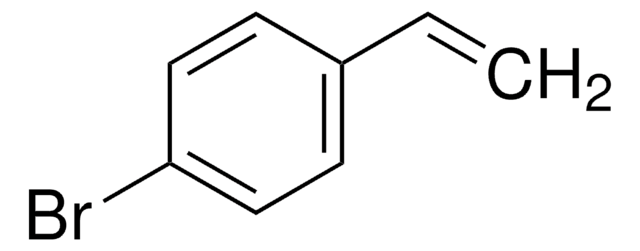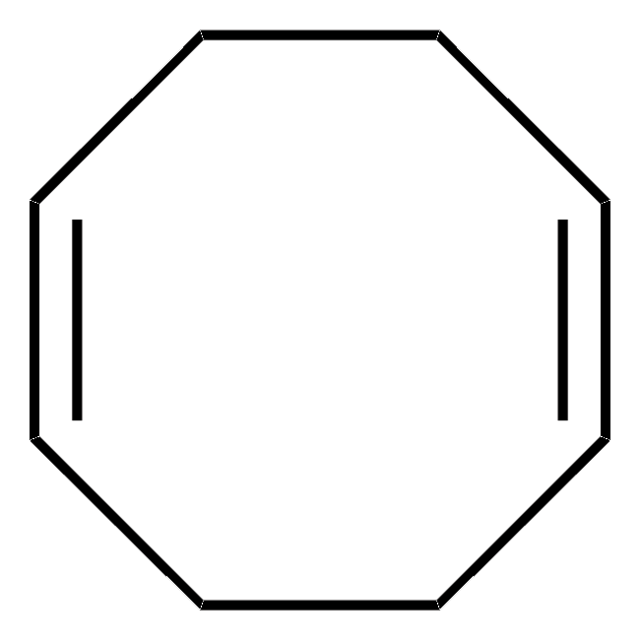If this product has an expiration or retest date, it will be shown on the Certificate of Analysis (COA, CofA). If there is no retest or expiration date listed on the product's COA, we do not have suitable stability data to determine a shelf life. For these products, the only date on the COA will be the release date; a retest, expiration, or use-by-date will not be displayed.
For all products, we recommend handling per defined conditions as printed in our product literature and website product descriptions. We recommend that products should be routinely inspected by customers to ensure they perform as expected.
For products without retest or expiration dates, our standard warranty of 1 year from the date of shipment is applicable.
For more information, please refer to the Product Dating Information document: https://www.sigmaaldrich.com/deepweb/assets/sigmaaldrich/marketing/global/documents/449/386/product-dating-information-mk.pdf
157449
β-Bromostyrene
97%
Synonyme(s) :
beta-Bromostyrene, 1-Bromo-2-phenylethylene
Sélectionner une taille de conditionnement
Sélectionner une taille de conditionnement
About This Item
Produits recommandés
Essai
97%
Forme
liquid
Indice de réfraction
n20/D 1.607 (lit.)
pb
110-112 °C/20 mmHg (lit.)
Pf
7 °C (lit.)
Densité
1.427 g/mL at 25 °C (lit.)
Groupe fonctionnel
bromo
phenyl
Température de stockage
2-8°C
Chaîne SMILES
Br\C=C\c1ccccc1
InChI
1S/C8H7Br/c9-7-6-8-4-2-1-3-5-8/h1-7H/b7-6+
Clé InChI
YMOONIIMQBGTDU-VOTSOKGWSA-N
Vous recherchez des produits similaires ? Visite Guide de comparaison des produits
Catégories apparentées
Description générale
Application
Mention d'avertissement
Warning
Mentions de danger
Classification des risques
Acute Tox. 4 Oral
Code de la classe de stockage
10 - Combustible liquids
Classe de danger pour l'eau (WGK)
WGK 3
Point d'éclair (°F)
215.6 °F - closed cup
Point d'éclair (°C)
102 °C - closed cup
Équipement de protection individuelle
Eyeshields, Faceshields, Gloves, type ABEK (EN14387) respirator filter
Faites votre choix parmi les versions les plus récentes :
Déjà en possession de ce produit ?
Retrouvez la documentation relative aux produits que vous avez récemment achetés dans la Bibliothèque de documents.
Les clients ont également consulté
-
How can I determine the shelf life / expiration / retest date of this product?
1 réponse-
Utile ?
-
-
How is shipping temperature determined? And how is it related to the product storage temperature?
1 réponse-
Products may be shipped at a different temperature than the recommended long-term storage temperature. If the product quality is sensitive to short-term exposure to conditions other than the recommended long-term storage, it will be shipped on wet or dry-ice. If the product quality is NOT affected by short-term exposure to conditions other than the recommended long-term storage, it will be shipped at ambient temperature. As shipping routes are configured for minimum transit times, shipping at ambient temperature helps control shipping costs for our customers. For more information, please refer to the Storage and Transport Conditions document: https://www.sigmaaldrich.com/deepweb/assets/sigmaaldrich/marketing/global/documents/316/622/storage-transport-conditions-mk.pdf
Utile ?
-
-
WHAT IS THE STEREOCHEMISTRY OF THIS COMPOUND?
1 réponse-
The entire product is likely planar due to the conjugated effect between the aromatic ring and C=C double bond.
Utile ?
-
-
is there any possibility for decreacing the purity of the compound with out innert gases storage???
1 réponse-
Yes, the purity of may decline over time if exposed to atmospheric oxygen. Storing the compound under inert gas, such as nitrogen or argon, prevents decomposition. Please see the link below to review additional information regarding the breakdown reaction published to PubChem:
https://pubchem.ncbi.nlm.nih.gov/compound/5314126#section=Non-Human-Toxicity-ValuesUtile ?
-
Filtres actifs
Notre équipe de scientifiques dispose d'une expérience dans tous les secteurs de la recherche, notamment en sciences de la vie, science des matériaux, synthèse chimique, chromatographie, analyse et dans de nombreux autres domaines..
Contacter notre Service technique










